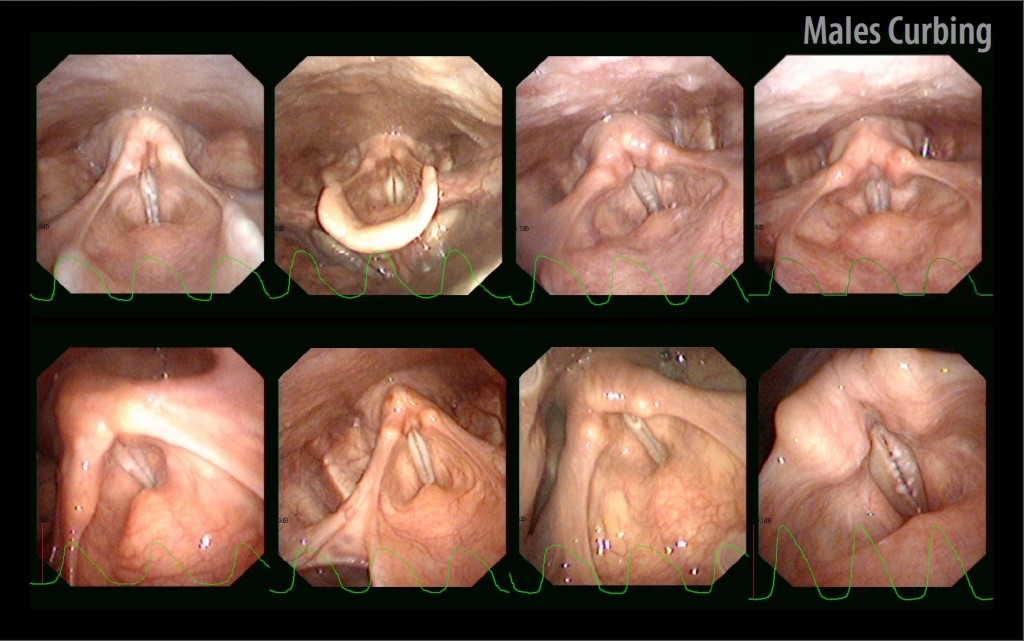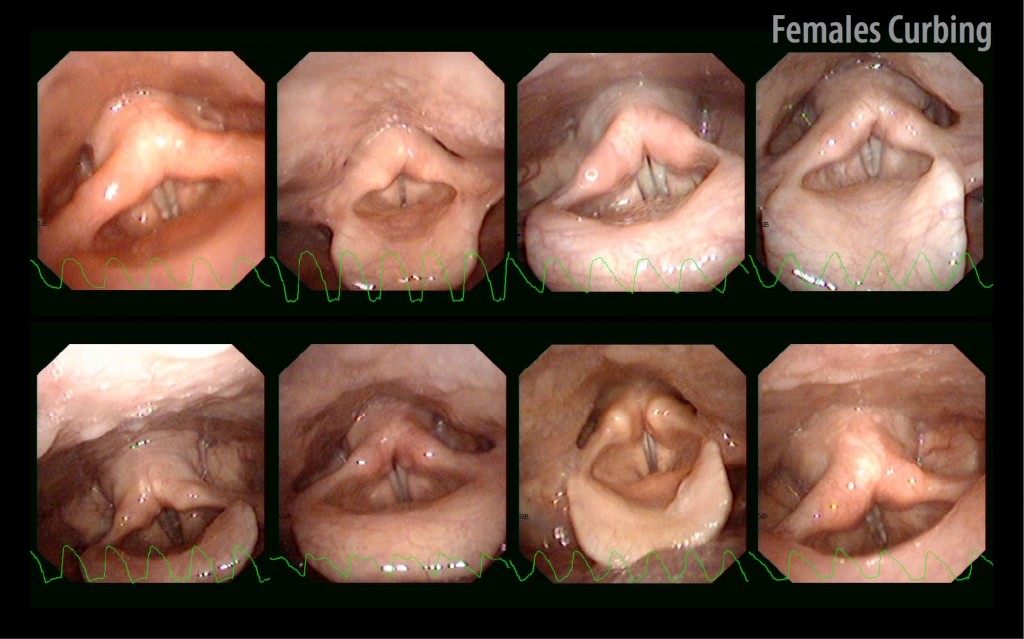Visual & waveform recognition on Curbing on 18 larynxes
On the following 8 male and 10 female stills images from the videos both the laryngeal gestures and the waveform in Neutral with air are seen. The stills are extracted from the videos from the endoscopy study performed by Julian McGlashan and Cathrine Sadolin at CVI in Copenhagen in June 2007. The stills are extracted from the videos in the manner previously described. (See Laryngeal recognition in Curbing).
When looking at these 18 stills certain patterns are seen in the laryngeal gestures and the laryngograph waveform within each mode.
In Curbing the false folds approach each other slightly, covering some (the lateral aspect) of the vocal folds. The front and the back of the laryngeal opening approach each other, making the angle sharper between the aryepiglottic folds and the lower part of the epiglottis. The opening of the larynx is more narrowed, creating an angle between the arytenoids and the aryepiglottic fold. The cuneiforms are also rolled in a bit.
Also notice the Curbing laryngograph waveform. It shows a steep onset and a fairly long closure of the vocal folds with a roll off compared to Neutral. The steep onset indicates that the vocal folds are coming together rapidly and the wider shape indicates that the vocal folds stay together for longer, which corresponds nicely with the louder volume often used in Curbing.
The Laryngeal gestures and the laryngograph waveform are more to be seen as patterns of progression from mode to mode, rather than absolutes. The larynx, the laryngeal gestures and the waveforms often differ from singer to singer, some singers have really weird waveforms, but still the patterns often show similar features. The progressive change in the patterns can be used as a guideline on how to identify the modes for an individual singer.



